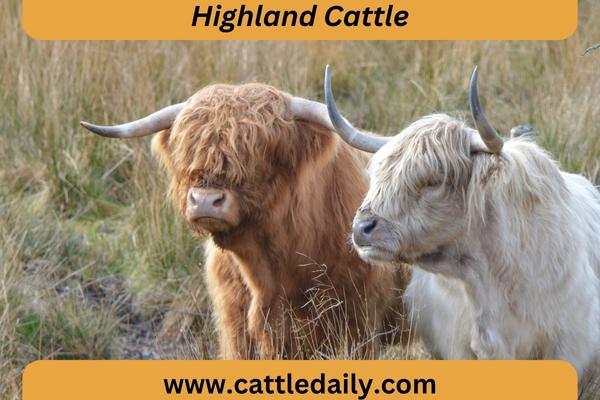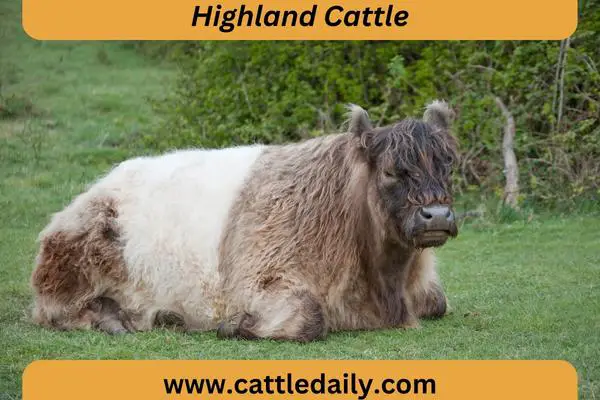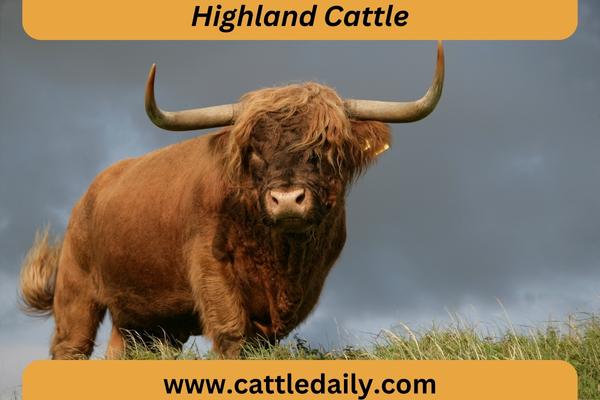Highland Cattle
Highland cattle are a distinctive and unique bovine breed originating from the rugged Scottish Highlands. Highland cattle have become iconic symbols of Scotland with their long, wavy coats and sweeping horns.
But beyond their distinctive looks, highland cattle have many advantageous traits that have made them a popular bovine breed worldwide.
In this blog post article, we’ll explore the origins of highland cattle, their common uses, key advantages and disadvantages of the breed, and their notable physical and behavioural characteristics.
The Origins of Highland Cattle
Highland cattle have a long history stretching back hundreds of years in the remote Scottish Highlands. Some researchers believe highland cattle are descended from wild cattle brought to Scotland as far back as 6000 BC.
Selective breeding over thousands of years resulted in the hardy highland cattle breed that naturally resisted the harsh weather and poor vegetation of the Scottish Highlands. Highland cattle were vital to Scottish clans, providing meat, milk, leather and draught power.
The first written records of highland cattle date back to the 6th century AD. By the 19th century, highland cattle numbers reached around 300,000.
But crossbreeding with other cattle breeds led to a decline in population. Eventually, highland cattle breeds were classified as vulnerable native breeds by the Rare Breeds Survival Trust.
Today, active conservation efforts have aided the resurgence of highland cattle. The worldwide population is estimated to be between 15,000 and 20,000. While still considered a rare breed, highland cattle are no longer at risk of extinction.

What Are Highland Cattle Used For?
For centuries, Scottish clans relied on highland cattle for a variety of purposes:
- Meat – Highland cattle produce lean, flavorful beef due to their natural foraging over grasslands. The meat is similar to grass-fed beef.
- Milk – Highland cattle produce rich, full-flavored milk ideal for making dairy products like cheese and butter.
- Leather – The distinctive long hair of highland cattle creates high-quality leather for items like boots, belts, wallets and handbags.
- Draft – Highland cattle were used as draught animals to pull carts and farming equipment before the introduction of machinery.
Today, the primary uses of highland cattle remain meat and milk production, as well as livestock shows. The lean beef is marketed as free-range and grass-fed to command premium prices. Highland cattle milk is also gaining popularity for artisanal cheeses and yogurt.
The breed has also grown more popular as an ornamental herd animal due to their striking appearance. Some farmers keep small herds of highland cattle for conservation grazing to preserve natural landscapes.
Advantages of Highland Cattle
Many beneficial qualities have contributed to the sustained popularity of highland cattle breeds:
- Hardy – Highland cattle are highly hardy and adapted to living outdoors year-round, even in cold, wet conditions. Their long, thick coats provide insulation against harsh weather.
- Self-sufficient – They are excellent foragers, capable of finding nutrients in poor-quality vegetation. Minimum supplementary feeding is required.
- Calving – Highland cattle breeds enjoy relatively easy calving with few complications. Heifers can first calve at only two years of age.
- Temperament – The docile nature of highland cattle makes them easier to manage than other breeds. Cows are very protective of their young when threatened.
- Lean meat – Their meat is considered healthier, with less fat due to extensive grazing. The marbled texture provides a superior taste.
- Milk quality – Highland cattle milk has higher protein and butterfat content than milk from most dairy breeds.
- Maternal instincts – Highland cattle deeply bond with their calves, rarely rejecting them. This instinct also allows cross-fostering of orphaned calves.
Overall, highland cattle are low-maintenance cattle with excellent maternal abilities. They remain productive on poor forage and require little management or intervention.

Disadvantages of Highland Cattle
However, there are some potential disadvantages to consider with the highland cattle breed:
- Slow maturity – Highland cattle breeds are slow to physically mature. Heifers take over two years to reach breeding condition and steers three years to achieve market weights.
- Carcass yield – The lean nature of highland cattle results in lower meat yields compared to some beef breeds selected for muscling and marbling.
- Milking traits – While milk is high quality, milk yields are lower than specialized dairy breeds. Highlands produce only enough milk to support calves.
- Calving difficulties – About 10% of calves require assistance during birthing. The calves’ broad head and shoulders can complicate deliveries. Difficult births are more likely with heifers.
- Handles cold better than heat – Highland cattle fare poorly in hot, humid climates. They become stressed and suffer reduced productivity. Providing shade and cooling is essential.
- Coat colors – Only specific colour patterns meet official breed standards. Solid black, red, white, and spotted gray coats are preferred.
Highland cattle are not suitable for large-scale, high-volume beef or dairy production. But highlands offer many advantages for smallholder farms seeking low-input, hardy cattle.

Characteristics of Highland Cattle
Highland cattle stand apart from other breeds due to their long, wavy coats and sweeping horns. But they also have other distinctive physical and behavioral traits. Here are some of the most notable characteristics of highland cattle:
Physical Characteristics
- Coat – A thick, double-layered coat of long hair that provides insulation. Colors include black, brindle, red, yellow, white and silver dun.
- Horns – Majestic, wide-sweeping horns extended at each side of the head.
- Build – A sturdy, muscular frame with strong legs and hooves. Average weights reach 800 lbs for cows and 1200 lbs for bulls.
- Hair – A fringe of hair over the eyes and small tufts on ears, dewlap and between horns.
Behavioral Characteristics
- Temperament – Typically docile and laid-back. Some handling difficulties may occur with bulls or cows with calves.
- Hardiness – Thrive on poor vegetation in wet, cold climates. Require minimal shelter or supplementary feeding.
- Foraging – Willingly graze coarse grasses, heathers and brush other cattle avoid.
- Protectiveness – Maternal cows are attentive and protective of their calves if they perceive a threat.
- Social nature – Prefer to graze in separate groups of cows, calves and bulls. But they congregate for breeding.
The unique qualities of highland cattle have ensured their survival and rising popularity as a hardy, heritage breed. Their rich history and standout appearance continue to captivate cattle enthusiasts today.
By understanding their background, uses, strengths and limitations, cattle farmers can determine if incorporating highland cattle may be beneficial.
Conclusion
With origins dating back centuries in the rugged Scottish Highlands, highland cattle have adapted over generations into a distinctive, cold-hardy breed. Beyond their iconic shaggy coats and sweeping horns, highland cattle offer great advantages like calving ease, lean beef, rich milk and docile temperaments.
However, slow maturity and milk yields limit their utility for intensive production. Used mainly for their quality meat, conservation grazing and show cattle, highland cattle remain a beloved heritage breed with a worldwide following. Learn here more about cattle breeds and types for cattle farming.


